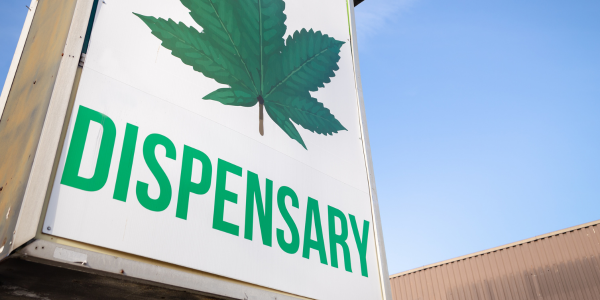The term marijuana is irrelevant and is an American word for what many other countries refer to as cannabis, but for simplicity’s sake, we routinely use the terms marijuana and cannabis interchangeably.
I’m certain it comes as no surprise that cannabis is the most used illicit substance in the United States. And I say “illicit” because the United States Drug Enforcement Administration still classifies marijuana as a Schedule I substance – rendering it an “illegal” drug on the Federal level. However, 25 states have now “legalized” marijuana on a recreational level, and most states have medical marijuana laws.
Marijuana can be rather confusing, as it is comprised of many different compounds. Cannabis is a blend of over 100 cannabinoids (compounds) which are found in the actual plant itself and are responsible for the medicinal and psychoactive effects associated with cannabis. The two most prominent of these are tetrahydrocannabinol (THC) and cannabidiol (CBD).
Delta-9 THC (delta-9 tetrahydrocannabinol) is the cannabinoid primarily responsible for the euphoric effects or “high” derived from cannabis sativa. THC is linked to cognitive impairment such as adverse effects on IQ, particularly in adolescents, as well as amotivational syndrome, poor judgment, and altered perception. The FDA has approved only two synthetic delta-9 THC formulations, which are used to alleviate chemotherapy-induced nausea and vomiting and to increase appetite in patients with AIDS wasting syndrome. Delta-9 THC can be smoked or vaporized in flower (bud) form.
What is Delta-8 THC? Delta-8-tetrahydrocannabinol is essentially a less potent cannabis compound with similar psychoactive effects as delta-9 THC. I believe it’s fair to characterize it as a “delta-9 lite.” Delta-8 THC products are available in many forms, including gummies, chocolate and other candies, cookies, tinctures, vaping cartridges, infused drinks and even breakfast cereal. When weighing the potential risks of consuming delta-8 THC, it’s important to consider that the FDA hasn’t evaluated or approved any delta-8 THC products for safe use. Delta-8 THC manufacturers may also market their products with unproven claims of health benefits that could put public health at risk.
Cannabidiol (CBD) is the next most prevalent cannabinoid after THC. It is found in hemp varieties of cannabis. It does not induce a “high” like THC does, although many users report that it is somewhat sedating. CBD also doesn’t cause some of the adverse effects linked to THC – cognitive impairment, in particular. Sleepiness is the most often reported side effect. As an OTC product, CBD’s legality is a complicated matter that legal analysts continue to debate. It is available in multiple forms – oils, tinctures, capsules, and gummies. CBD can deliver a rather demonstrative antianxiety effect in users, but keep in mind that feeling sedated and sleepy play a role in its anxiolytic properties.
In the 1990s, the average THC content in marijuana was 4 percent. By 2014, it averaged approximately 14 percent, while today’s highly concentrated marijuana averages out at 40 percent, but can be as high as 90 percent!
I’ve studied and researched marijuana for years now, and heretofore have taken a neutral position on the substance, but no more. If adults use marijuana either legally or recreationally, so be it, it’s their choice, and in so choosing, they take on the associated risks – which are greater than ever. Adult users report increasing difficulty with regulating the euphoric effects due to elevated THC counts, thus rendering the drug less tolerable.
Adolescents using it? The sad part about this is that some medical providers are now making recommendations that kids with anxiety give CBD a try. But in my experience, once the door is opened and kids are green-lighted to use a marijuana-related product like CBD for anxiety, it can take control of their lives. CBD will alleviate anxiety symptoms for sure, but at the expense of feeling sedated, sleepy, and dopey. They then lose interest in important aspects of their lives, get considerably behind in school, start feeling overwhelmed and use more of the substance because as soon as they do, all anxiety is relieved. So instead of taking on the stress head-on, they resort to a continuous cycle of self-medicating getting further and further behind.
At today’s potency and considering the adverse effects, there’s not a single cannabinoid I would recommend for the treatment of any psychiatric disorder, to anyone, regardless of age. Certain medical disorders, yes, mental disorders, no.
Attribution Statement:
Joe Wegmann is a licensed pharmacist & clinical social worker has presented psychopharmacology seminars to over 10,000 healthcare professionals in 46 states, and maintains an active psychotherapy practice specializing in the treatment of depression and anxiety. He is the author of Psychopharmacology: Straight Talk on Mental Health Medications, published by PESI, Inc.
To learn more about Joe’s programs, visit the Programs section of this website or contribute a question for Joe to answer in a future article: joe@thepharmatherapist.com.
